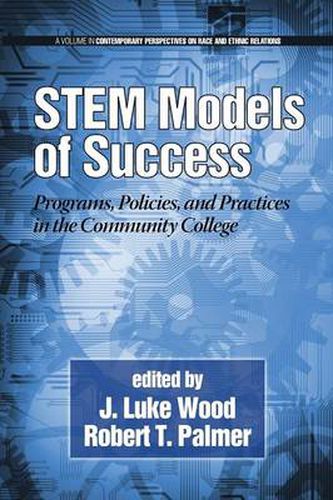Readings Newsletter
Become a Readings Member to make your shopping experience even easier.
Sign in or sign up for free!
You’re not far away from qualifying for FREE standard shipping within Australia
You’ve qualified for FREE standard shipping within Australia
The cart is loading…






This title is printed to order. This book may have been self-published. If so, we cannot guarantee the quality of the content. In the main most books will have gone through the editing process however some may not. We therefore suggest that you be aware of this before ordering this book. If in doubt check either the author or publisher’s details as we are unable to accept any returns unless they are faulty. Please contact us if you have any questions.
As the U.S. focuses on positioning itself to retain and advance its status as a world leader in technology and scientific innovation, a recognition that community colleges are a critical site for intervention has become apparent. Community colleges serve the lion’s share of the nation’s postsecondary students. In fact, 40% of all undergraduate students are enrolled in community colleges, these students account for nearly 30% of all STEM undergraduate majors in postsecondary institutions. These students serve as a core element of the STEM pipeline into four-year colleges and universities via the community college transfer function. Moreover, community colleges are the primary postsecondary access point for non-traditional students, including students of color, first-generation, low-income, and adult students. This is a particularly salient point given that these populations are sordidly underrepresented among STEM graduates and in the STEM workforce.
Increasing success among these populations can contribute significantly to advancing the nation’s interests in STEM. As such, the community college is situated as an important site for innovative practices that have strong implications for bolstering the nation’s production and sustenance of a STEM labor force. In recognition of this role, the National Science Foundation and private funding agencies have invested millions of dollars into research and programs designed to bolster the STEM pipeline. From this funding and other independently sponsored inquiry, promising programs, initiatives, and research recommendations have been identified. These efforts hold great promise for change, with the potential to transform the education and outcome of STEM students at all levels. This important book discusses many of these promising programs, initiatives, and research-based recommendations that can impact the success of STEM students in the community college. This compilation is timely, on the national landscape, as the federal government has placed increasing importance on improving STEM degree production as a strategy for America’s future stability in an increasingly competitive global marketplace. Informed by research and theory, each chapter in this volume blazes new territory in articulating how community colleges can advance outcomes for students in STEM, particularly those from historically underrepresented and underserved communities.
$9.00 standard shipping within Australia
FREE standard shipping within Australia for orders over $100.00
Express & International shipping calculated at checkout
This title is printed to order. This book may have been self-published. If so, we cannot guarantee the quality of the content. In the main most books will have gone through the editing process however some may not. We therefore suggest that you be aware of this before ordering this book. If in doubt check either the author or publisher’s details as we are unable to accept any returns unless they are faulty. Please contact us if you have any questions.
As the U.S. focuses on positioning itself to retain and advance its status as a world leader in technology and scientific innovation, a recognition that community colleges are a critical site for intervention has become apparent. Community colleges serve the lion’s share of the nation’s postsecondary students. In fact, 40% of all undergraduate students are enrolled in community colleges, these students account for nearly 30% of all STEM undergraduate majors in postsecondary institutions. These students serve as a core element of the STEM pipeline into four-year colleges and universities via the community college transfer function. Moreover, community colleges are the primary postsecondary access point for non-traditional students, including students of color, first-generation, low-income, and adult students. This is a particularly salient point given that these populations are sordidly underrepresented among STEM graduates and in the STEM workforce.
Increasing success among these populations can contribute significantly to advancing the nation’s interests in STEM. As such, the community college is situated as an important site for innovative practices that have strong implications for bolstering the nation’s production and sustenance of a STEM labor force. In recognition of this role, the National Science Foundation and private funding agencies have invested millions of dollars into research and programs designed to bolster the STEM pipeline. From this funding and other independently sponsored inquiry, promising programs, initiatives, and research recommendations have been identified. These efforts hold great promise for change, with the potential to transform the education and outcome of STEM students at all levels. This important book discusses many of these promising programs, initiatives, and research-based recommendations that can impact the success of STEM students in the community college. This compilation is timely, on the national landscape, as the federal government has placed increasing importance on improving STEM degree production as a strategy for America’s future stability in an increasingly competitive global marketplace. Informed by research and theory, each chapter in this volume blazes new territory in articulating how community colleges can advance outcomes for students in STEM, particularly those from historically underrepresented and underserved communities.